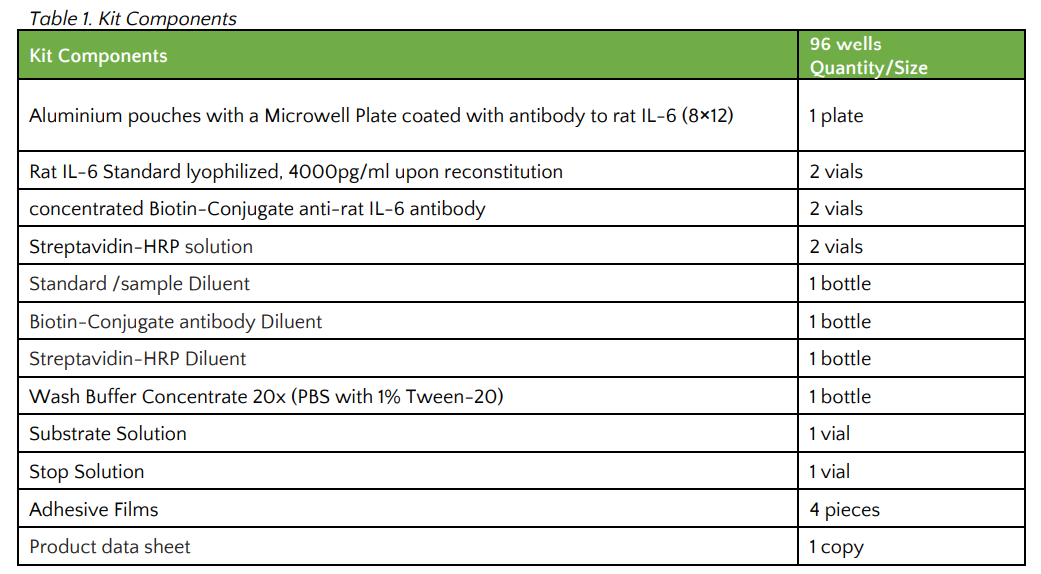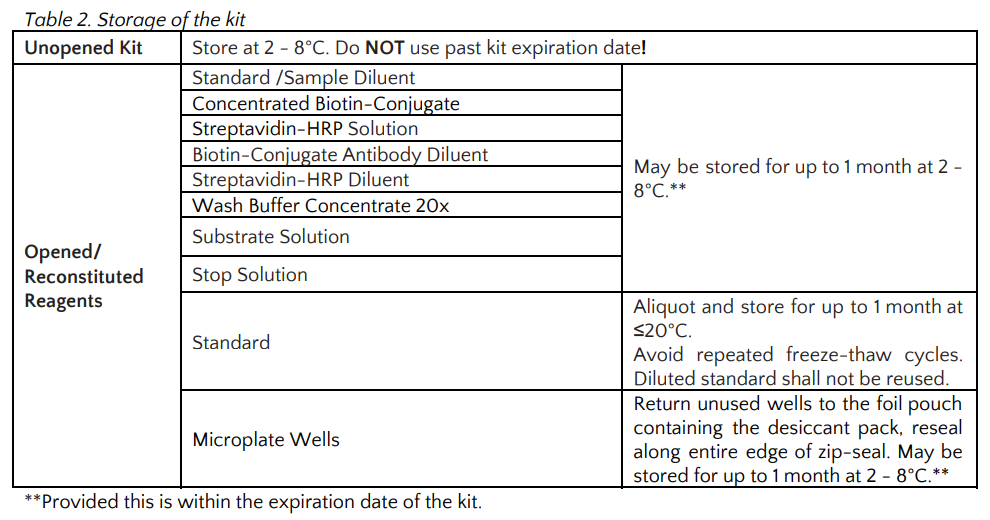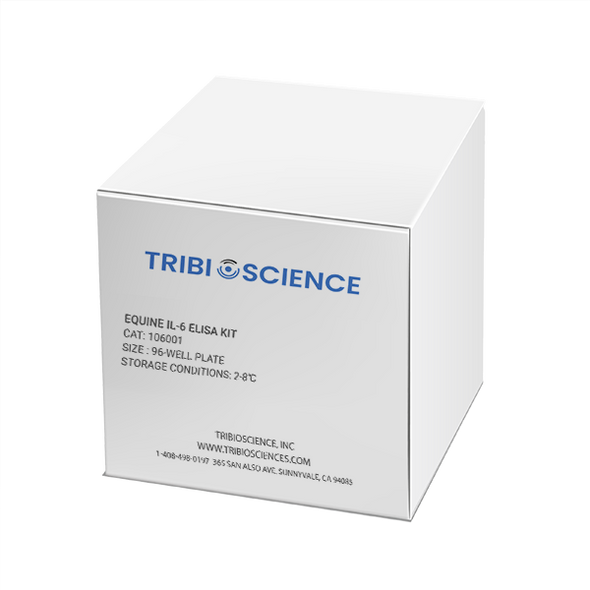Rat IL-6 ELISA Kit | BSKR1005
- SKU:
- BSKR1005
- Availability:
- In Stock
- Size:
- 96 tests
- Storage:
- Store at 2 - 8°C
Description
Rat IL-6 ELISA Kit | BSKR1005
This assay employs the quantitative sandwich enzyme immunoassay technique. A monoclonal antibody specific for IL-6 has been pre-coated onto a microplate. Standard, control, or sample and the working solution of Biotin-Conjugate are pipetted into the wells. Following incubation and wash steps, any IL-6 present is bound by the immobilized antibody and the detection antibody specific for IL-6 is binds to the combination of capture antibody-IL-6 in sample. Following a wash to remove any unbound combination, and enzyme conjugate is added to the wells. Following incubation and wash steps a substrate is added. A coloured product is formed in proportion to the amount of IL-6 present in the sample. The reaction is terminated by addition of acid and absorbance is measured at 450nm. A standard curve is prepared from seven IL-6 standard dilutions and IL-6 sample concentration determined.
For Use with serum, plasma and cell culture supernatants. For Research Use Only. Not for use in diagnostic procedures.
TARGET INFORMATION
Interleukin 6 (IL-6) is a multifunctional cytokine that plays important roles in host defense, acute phase reactions, immune responses, nerve cell functions and hematopoiesis.
IL-6 is a prototypic member of the IL-6 superfamily of cytokines that share gp130 as a component required for signal transduction. The rat, mouse and human IL-6 cDNAs have been cloned. Rat IL-6 cDNA encodes a 211 amino acid (aa) residue precursor polypeptide with a hydrophobic signal peptide that is cleaved to generate the 187 aa residue mature protein. At the protein sequence level, there is approximately 39% identity between rat and human, and 87% identity between mouse and rat IL-6.
IL-6 is expressed by a variety of normal and transformed lymphoid and non-lymphoid cells. The production of IL-6 is up-regulated by numerous signals such as mitogenic or antigenic stimulation, lipopolysaccharides, calcium ionophores, cytokines and viruses. IL-4, IL-10 and IL-13 inhibit IL-6 expression in monocytes. Elevated serum IL-6 levels have been observed in a number of pathological conditions, including bacterial and viral infections, trauma, autoimmune diseases, inflammations and malignancies.
Materials supplied

Storage







